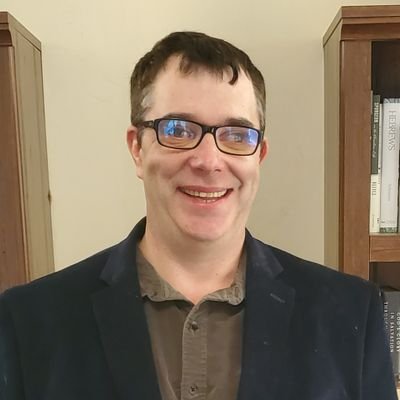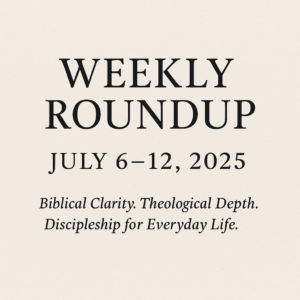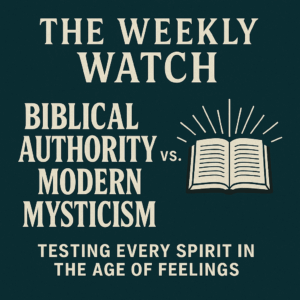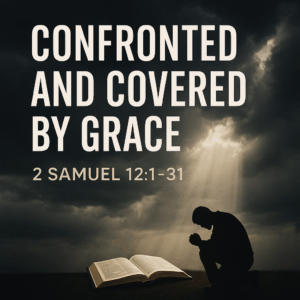⏱️ Estimated Reading Time: 7 min read
Bible reading, meditation, journaling, meaty theology books—they are crucial and quite individualistic. And while there is a place for your personal, passionate pursuit of God, the Bible was never meant to remain a solely singular endeavor. The Word of God was and has always been a community experience.
These books, letters, stories, poems and prophecies are meant to be read aloud. It is the call upon the people of God to worship Him through His Word, recounted and recited in the midst of biblical community.
Dr. Jeff Arthurs presents five reasons why the public reading of Scripture is integral to Christian community worship, not as mere perfunctory recitation but as impassioned and Spirit-empowered speaking of the very words of God:
- We are commanded to read the Bible publicly. Referring, of course, to 1 Timothy 4:13, “Devote yourself to the public reading.” We are a forgetful people, all too often foggy in our thinking and heart’s desires. We need to be reminded who we are, so God commands us to read Scripture devotedly and publicly.
- When we read the Bible publicly, we do what the people of God have always done. Based on the prominence public reading of Scripture has had through the millennia, Timothy Ralston concludes, “Public reading and preaching within the worship exposes [God’s] demands, our inadequacy, and his grace. It calls for covenant renewal and lies at the heart of spiritual revival. Therefore, how can we offer acceptable worship, if his Word does not have a prominent place in our liturgy?”
- God transforms us through the Word. Dallas Willard explains with an analogy: “In the same way that your hand moves in response to your thought and emotion,” just so does God perform his will (creating, ruling, and redeeming) through the unmediated extension of his will expressed in words. “What we call natural laws, then, must be regarded as God’s thoughts and intentions [that is, his words] as to how the world should run.”
- The Bible was meant to be read aloud. Before it was inscribed on vellum and papyrus, the stories, proverbs, and poetry of the Bible circulated orally, and after the oral literature was written down, it continued to be transmitted orally. Literature in the ancient world was spoken, not read silently, even when reading privately. This is still the case today in much of the worldwide Church, and that is appropriate because the Bible was meant to be received aurally.
- Hearing the Word is different than reading it silently. Hearing and seeing a reader embody the text is a different experience than silently pondering a script in the privacy of the study. Have you heard the Word read well? Vistas of new understanding and worship open as the people of God receive His words together.
These reasons form a basis for seeing the Scriptures as a community treasure. Reading the Word in community need not be long-faced and doleful. It should come alive with the very personalities behind the words themselves.
“Until I come,” says the apostle Paul, knowing that his death is imminent, seizing, perhaps, the opportunity to give direction to the church for the centuries ahead, “give attention” (NASB), or “devote yourself” (NIV), “to the public reading of Scripture, to exhortation and teaching.”
It’s clear enough what the apostle Paul wants done in the public assembly of the church. He wants Scripture read. The practice of the synagogue was to unroll the scrolls of Scripture, read a portion, mark where they stopped, and then the next Sabbath pick up again where they left off. The reading was lectio continua—consecutive, sequential readings—not, by the way, lectio selecta readings, selected from here or there.
Jesus in the synagogue in Nazareth (Luke 4:16–19) and the apostle Paul at Pisidian Antioch and elsewhere (Acts 13:15; 19:8) provide examples of this public discipline in action. We have as well the Apostle James’ explanation of the practice of the synagogue: “For Moses from ancient generations has in every city those who preach him, since he is read in the synagogues every Sabbath” (Acts 15:21, NASB).
“Moses,” he says, “is read in the synagogue every Sabbath.” It is to this practice that the Apostle Paul refers and that the early church had adopted. Liturgical scholars agree that lectio continua reading was the practice of the early church from the time of the apostles through the patristic period.
Following Gregory the Great (540–604 A.D.), the medieval church adopted a lectio selecta approach to the readings. But selected readings were unsatisfactory to the Reformers, who almost without exception required in their liturgical reforms that extensive lectio continua readings be restored to the public services of the church. Lectio continua readings of Scripture were the practice of Reformed orthodoxy until well into the nineteenth century.
What is a proper sermon? It is an explanation of the reading. When Jesus concluded the reading from the prophet Isaiah at the synagogue at Nazareth, “the eyes of all…were fixed upon him” in anticipation of His comments. “And he began to say to them,” Luke tells us next. Jesus, by providing expository comments, followed the pattern expected in the synagogue service (Luke 4:16–21).
The expectation of exhortation based upon the reading can be seen in the synagogues in Acts also. The Law and the Prophets were read, as can be seen in Acts 13:15a. Then the synagogue officials asked of the apostle Paul: “If you have exhortation for the people, say it.” Scripture reading led directly to interpretative comments and exhortations. Moses is preached in every city, James maintained, because “he is read in the synagogues every Sabbath” (Acts 15:21). Reading and preaching are not synonymous, but they may be juxtaposed in the manner James does because they are seen as inseparably linked, the preaching arising out of and dependent upon the reading. This would seem to be the natural context of the Apostle Paul’s exhortation to Timothy to “give attention to the public reading of Scripture,” and the “exhortation and teaching” that arises out of reading (1 Timothy 4:13).
The practice of the synagogue became that of the apostolic church, and then of the patristic church. The sermons of Clement of Alexandria (150–215 A.D.), Origen (185–254 A.D.), Chrysostom (347–407 A.D.), and Augustine (354–430 A.D.) provide abundant testimony to the practice of sequential expository or lectio continua preaching in the early centuries of the church.
Medieval preachers abandoned the patristic practice and preached largely topical sermons. But the Reformers, on the basis of their study of Scripture and the Church Fathers, restored the earlier practice of lectio continua preaching. Zwingli, Bucer, Capito, and Calvin, among many others, were all lectio continua preachers. They preached verse-by-verse through the books of the Bible.
Extended readings are virtually non-existent in today’s market-driven church environment. Topical sermons, only slightly related to a text of Scripture and addressing felt needs, have become the norm. But if we are convinced that we are born again by the living and abiding word (1 Peter 1:23), that we are sanctified by the truth (John 17:17), and that our souls, as the Apostle Paul says here, are “nourished on the words of the faith and of sound doctrine” (1 Timothy 4:6), we will require a prominent role in the public assembly for the Word of God, whether for our personal benefit or for the sake of the health and well-being of the whole church.
Dave Jenkins is happily married to his wife, Sarah. He is a writer, editor, and speaker living in beautiful Southern Oregon. Dave is a lover of Christ, His people, the Church, and sound theology. He serves as the Executive Director of Servants of Grace Ministries, the Executive Editor of Theology for Life Magazine, the Host and Producer of Equipping You in Grace Podcast, and is a contributor to and producer of Contending for the Word. He is the author of The Word Explored: The Problem of Biblical Illiteracy and What To Do About It (House to House, 2021), The Word Matters: Defending Biblical Authority Against the Spirit of the Age (G3 Press, 2022), and Contentment: The Journey of a Lifetime (Theology for Life, 2024). You can find him on Facebook, Twitter, Instagram, Youtube, or read his newsletter. Dave loves to spend time with his wife, going to movies, eating at a nice restaurant, or going out for a round of golf with a good friend. He is also a voracious reader, in particular of Reformed theology, and the Puritans. You will often find him when he’s not busy with ministry reading a pile of the latest books from a wide variety of Christian publishers. Dave received his M.A.R. and M.Div through Liberty Baptist Theological Seminary.




